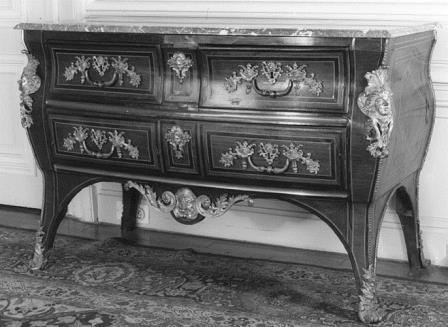Recommendation
In a letter dated 29 October 2008, the Minister for Education, Culture and Science (hereafter referred to as: ‘the Minister’) requested the Restitutions Committee (hereafter referred to as: ‘the Committee’) to issue a recommendation regarding the application submitted by J.L., of California, United States of America (hereafter referred to as: ‘the applicant’), on 17 December 2007 for the restitution of a commode in regency style. The claimed piece of furniture was returned to the Netherlands after the Second World War and is currently part of the National Art Collection under inventory number NK 256. The commode is currently on loan to the Dutch embassy in Brussels.
